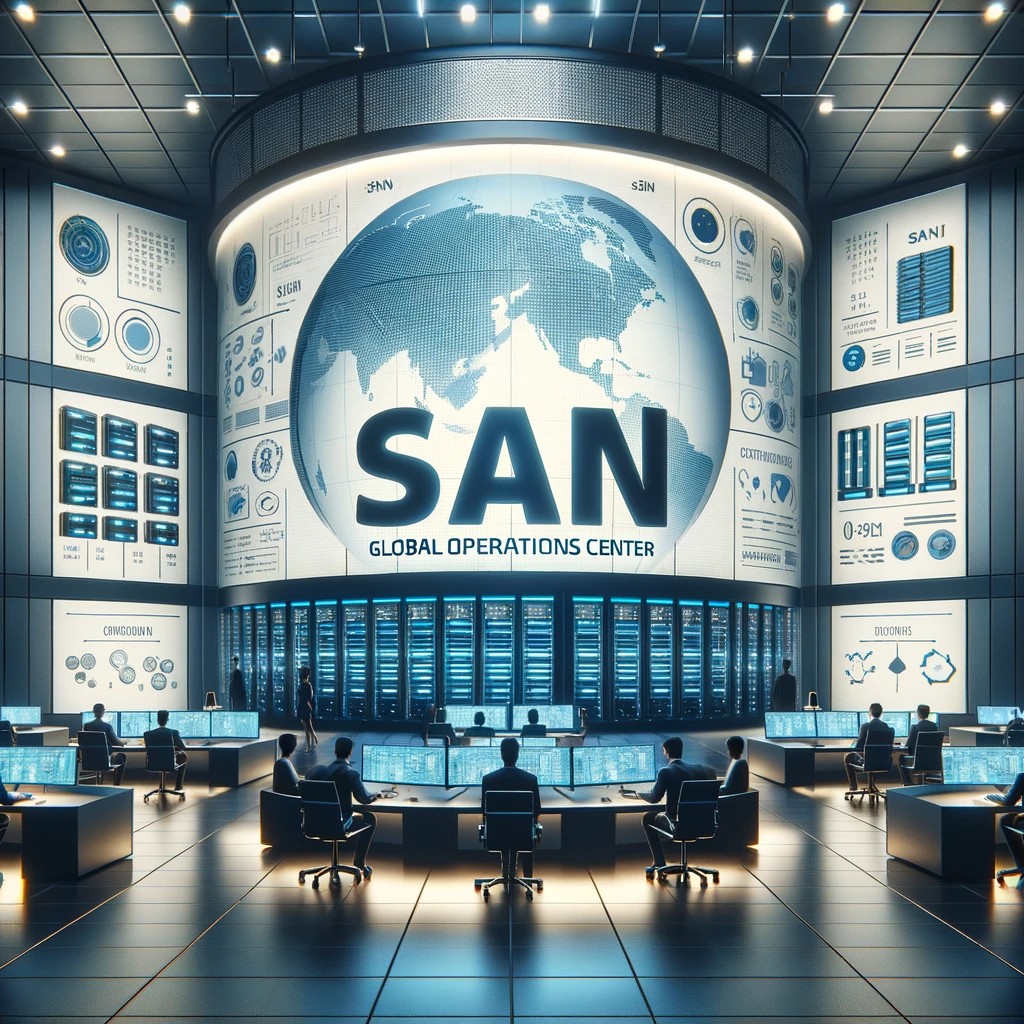A Storage Area Network (SAN) is a specialized, high-speed network that provides block-level network access to storage. SANs are designed to handle large volumes of data and are typically used in enterprise environments to enhance storage devices’ accessibility and performance. They are crucial in complex data storage environments, where they offer enhanced storage management, scalability, and data protection.
Core Components of SAN Solutions:
- Storage Devices: Includes disk arrays, tape libraries, and optical jukeboxes. These are high-capacity storage units central to the SAN’s function.
- Network Infrastructure: Consists of fiber channel switches, routers, and host bus adapters (HBAs) that connect storage devices with servers.
- Fiber Channel Technology: The most common connectivity technology in SANs, known for its high speed and reliability.
- Management Software: Used for managing, monitoring, and configuring the SAN.
Types of SAN Architectures:
- Fiber Channel Protocol (FCP): The most widely used SAN architecture, offering high speed and low latency, ideal for demanding data environments.
- Internet Small Computer Systems Interface (iSCSI): Uses IP networks for data transfer, providing a cost-effective alternative to FCP.
- Fiber Channel over Ethernet (FCoE): Combines the high-speed nature of Fiber Channel with the ubiquity of Ethernet networks.
Applications and Benefits:
- Centralized Storage Management: SANs allow for centralized management of storage resources, simplifying administrative tasks and reducing overhead.
- High Performance and Scalability: Ideal for environments requiring high data throughput and low latency, like databases and transactional processing systems.
- Enhanced Data Protection: Supports advanced data backup and recovery solutions, essential for disaster recovery and business continuity planning.
- Improved Data Accessibility: Provides high-speed access to data, enhancing the efficiency of applications and services that rely on large-scale data storage.
SAN solutions are pivotal for businesses dealing with large volumes of critical data. They offer a sophisticated and scalable way to manage storage infrastructure. The flexibility of SANs in supporting different storage technologies and their ability to integrate with existing IT environments make them an indispensable component of modern enterprise data centers. As data volumes continue to grow and the need for efficient data management becomes more critical, SANs will remain a key technology in enterprise IT strategies.

